Mums are an important plant in your fall colors repertoire. This plant blooms until the frosts start, which extends the life of your garden immensely. Figuring out how to care for mums only requires a few steps, and then this hardy plant is brightening your yard or porch.
What are Mums?
Mum is short for chrysanthemums (Chrysanthemum spp.). These hardy plants can bloom in the spring, summer, or fall, depending on their care. They typically thrive in USDA hardiness zones 5 to 9, but certain varieties are more cold tolerant.

Chrysanthemums were first cultivated in China. Documentation for them exists back to the 15th century B.C.; however, cultivation may be even older. The flower spread out from there, appearing in Japan in the 8th century A.D. and Europe in the 18th century A.D. Modern mums are much showier than those cultivated initially.
Mums mean many different things depending on the culture you are looking at. In China, this daisy variety is called the flower of life. It's a fall showstopper in the USA that's present at everything from homecoming to amazing gardens. However, in Europe, many cultures associate chrysanthemums with death.
Choosing Mums
Most people pick mums up from the garden center or their local grocery store. Choosing these established plants is an easier route than starting from seeds. Mum seeds are also an interesting route since they may not be true to the parent plant, resulting in entirely distinct colors and more.
The first step in figuring out how to care for mums is choosing a time to plant the mums. Mums have a shallow root system, but it still needs time to develop. Therefore, planting mums in the spring increases the chances they will come back year after year.
When examining plants in the garden center, you want to look for mums that have not fully bloomed yet. That means the plant has not spent its energy yet and has a better chance of rooting in a new environment. These will also provide you with blooms longer.
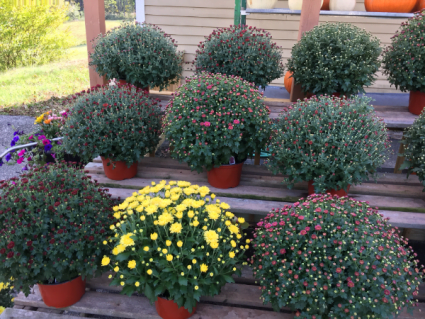
In general, you want to avoid choosing florist mums. These are beautiful plants, but they tend not to come back year after year. Instead, focus on the labels hardy, garden, and fall, so you have an easier time caring for the mums.
How to Care for Mums
In general, mums are sold in containers with root-bound. The first step in how to care for mums involves getting them more space to grow. If the mum is in a pot, repot it into one the next size up. If the mum is going in the ground, make sure the next nearest mum is at least 18 inches away and that you water it in. Remember, mums love sunlight.
Pinching is essential for getting bushy mums, and without it, your mums will bloom too soon. For this procedure, you only need a set of pruning shears. You want to wait until the mum has grown to five inches and then cut off the top inch or so of growth for each stem. You'll repeat this procedure every time the mum grows another six inches through midsummer.
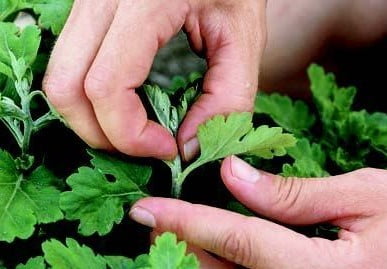
Deadheading is another valuable part of how to care for mums. Performing this task helps your mums bloom longer and look neater. Deadheading involves pinching off the spent blooms at least once per week so that the plant can focus on the new buds. More buds bloom this way than would do so naturally without harming the plant.
The last part of how to care for mums is overwintering. Generally, you can overwinter any mum if you manage the soil temperature and avoid pruning them. This control requires a three- to four-inch-thick layer of mulch before the first frost. Continue to water through the winter, and the mums should come back.
Of miscellaneous note, mums can be divided every three years or so in the spring. To do this, detach the mum's outer parts and place them in an area with fertilized, well-draining soil. Then you can compost the old centers, and you have more mums in your garden. You can also conventionally propagate mums.
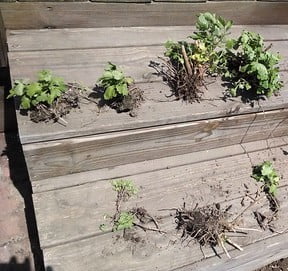
How to Care for Indoor Mums
Indoor or potted mums require a bit more attention and how to care for knowledge than their outdoor counterparts. The mums still do well in well-draining soil, so make sure your pots have drainage. These mums also need a lot of sunlight, so make sure you choose an area that gets at least four hours a day.
Additionally, mums require routine watering. During the initial establishment in a new pot, they need an inch of water per day. After that, you must keep the soil moist constantly on account of the shallow root system. You also want to ensure the watering you do doesn't stay up in the foliage.

Root-bound plants cannot flourish, so you will likely need to move your mums up a pot size when you buy them, and then every two years or so after that if you can get them to flourish. Add a layer of your favorite pot soil, and then gently break up the rootbound cluster before placing the mum in the pot.
Generally, you are not locked into keeping a mum indoors. With a proper hardening off period, you can transplant the mum outside in the spring to add to your gardens.
How to Care for Outdoor Mums
The how to for caring for mums outdoors is straightforward. Mums love sunlight, and they need well-draining soil. You should choose a location that offers those two things, as well as ready access to moisture.
Generally, you should plant mums 18 inches away from other plants. With proper pinching and care, mums can grow to three feet tall and three feet across. Each year, the mums will get a little bigger, and your garden will fill out.
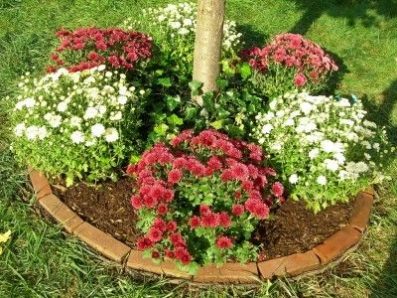
When figuring out how to care for mums in the fall, frost is a concern. You should put down a thick mulch ring before the first frost. This step in caring for mums will help keep the soil temperature relatively constant and prevents shock. If the mums blacken, cut the plant to an inch, and leave the mulch ring.



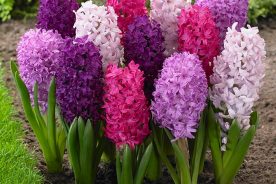

1 Comment
Regular watering is a crucial part of indoor mum care. Water the plant from under the leaves to help prevent fungal issues when caring for container mums. Deadhead if you wish, to keep the plant looking its best. Keep chrysanthemum houseplants where they can receive good air circulation and avoid excess humidity . In most cases, caring for container mums is a short lived project. This is because they flower for 3 to 4 weeks and then stop. Indoor conditions are not correct to force them to re-bloom and creating the correct conditions is a pain in the neck. For this reason, most indoor gardeners simply compost the plants after they are done flowering. This may seem heartless, but mums are relatively inexpensive and very easy to find.